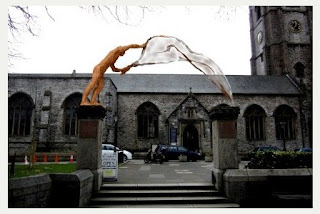Another assignment for my Context of Practice course:
Watch "Objectified", a documentary in which a lot of leading designers talk about their work, and make some observations about it in the next session, scheduled for 3rd December.
I've just viewed it and as I won't be attending the 3rd December session, I'll make a few observations here.
Apparently, Objectified is the second of a trilogy of documentaries. The first one was about the Helvetica typeface and the third is called "Urbanized" and looks at the growth of urban areas.
Regarding Objectified:
Here's a list of "Top 12 Quotes" from the video in a blog written by Build LLC, a Seattle-based firm of architects.
The ones that struck me:
"Every object tells a story if you know how to read it," a famous quote by Henry Ford (cited by Andrew Blauvelt, design curator of the Walker Art Centre in the video).
It brings me back to a question I've asked myself before - should I try and make my work tell a story of my own making, or should I let my audience make up their own stories?My experience suggests the latter. For example:
- The person that selected my "Ghosts" for an exhibition told me she'd picked it because of its references to the threat to global bio-diversity, a connection I'm still struggling to comprehend!
- I only realised that I'd designed "Smitten" in the style of Beryl Cook when someone pointed it out to me, after I'd submitted the proposal.
"We now have a new generation of products where the form bears absolutely no relation to the function" - Alice Hawthorn, design editor of the International Herald Tribune.
I wonder whether this only applies to consumer electronics?Actually, I think it all depends on what you're looking at in consumer electronics - a point made by Bill Moggridge, the designer of the Grid Compass Computer, also cited in the video. Namely, the design of consumer electronics doesn't stop at the surface, the hardware - it goes much deeper, into the software.
The reason that Apple's stuff is so successful isn't just because the outside surface looks minimalist and beautiful; it's also because the software is so well designed and intimately integrated with the hardware (which was probably top of Steve Job's manifesto).
I would say that form may not follow function visually in Apple products, but it does follow it from an "experience" point of view.
Thinking about it some more, I think there are other examples of form no longer following function. There was a time when you could see the various components of a car engine, for instance - the spark plugs, the distributor, the carburettor, and each one gave clues about what it was for and how it worked. Nowadays, the whole engine just looks like a box; the opportunity to fix things yourself has largely been with-held.






